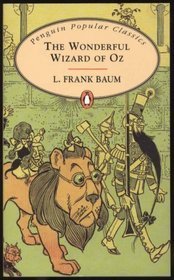This week’s post is yet another worksheet in my classics series. 
The Wonderful Wizard of Oz was published in 1899 and written by L. Frank Baum. It is the most famous story out of all the stories that have been written about Oz. This American fairy tale, as Frank Baum wanted it to be, is known over the whole world and has been adapted into a musical and is well known for its 1939 film adaptation. It did not stop there, however, there are many books, films and stories about Oz, think for example about the musical Wicked, which is a big hit right now.
My worksheet focuses on the children’s book, but it would be great if you would like to extend your lesson on the Wizard of Oz and use one of the many video clips available on the internet.
I hope this worksheet inspires you and the children you teach to explore Oz and I hope you will enjoy it as much as I did.
I think this story is also a great creative writing prompt. I did not add one in the worksheet this time, but you could easily ask the children to write about their own adventures in Oz or where they would go if they owned the silver shoes.
Have fun 🙂

